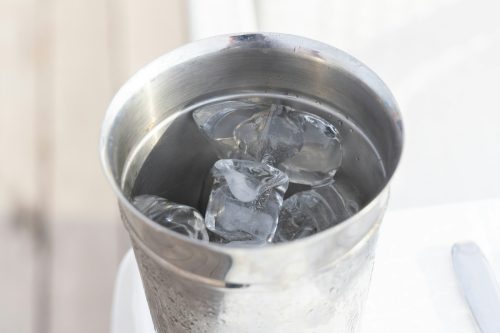When suffering from a herniated disc, the question of whether to use heat or cold to relieve pain comes up often. The confusion is understandable: some will tell you that ice is the answer, while others advocate using heat. So which approach is best?
In this article, we will explore in detail the benefits and limitations of heat and cold for treating back pain related to a herniated disc. We will also give you practical advice on how to apply both modalities safely and conclude with potential risks to avoid.
Understanding why there are so many contradictions about the use of hot and cold
Before we get into the specific benefits of heat and cold, it's important to understand why there are so many contradictions about it. You may have received conflicting recommendations before: your doctor advised you to apply ice, while your physiotherapist told you about heat. This confusion is explained by the fact that there is no single universal answer to this question.
Scientific studies show mixed results, and in some cases, they even conclude that more research is needed to determine which of the two methods is more effective. This means that each body reacts differently. So the key is to test both approaches and see what works best for you.
The benefits of ice to relieve a herniated disc
La ice is often used to relieve pain in the context of an acute injury, particularly because it helps reduce theinflammation and edema. But what are the mechanisms that make ice effective in relieving a herniated disc?
How ice works
Ice works by lowering the body temperature in the affected area. This process results in several beneficial effects:
- Vasoconstriction : Blood vessels constrict, slowing metabolism in the affected area and reducing the buildup of fluids that cause inflammation.
- Numbing effect : By slowing nerve conduction, ice helps reduce the sensation of pain.
- Decreased inflammation : By controlling excess inflammation, ice helps limit associated pain and swelling around the lower back.
Inflammation: good or bad?
It is essential to understand that theinflammation is not necessarily bad. In fact, inflammation is part of the healing process, as it helps repair damaged tissues.
However, excess inflammation can be painful and lead to swelling that limits movement. The goal of ice is not to eliminate inflammation, but to reduce excess to allow the body to function better.
The benefits of heat to relieve a herniated disc
La heat is another popular modality for relieving herniated disc pain, particularly due to its relaxing effects on the muscles. While ice reduces inflammation, heat works by increasing blood circulation, which can be especially beneficial during the healing phase.
How heat works
Heat works by increasing the temperature in the affected area, which causes:
- Vasodilatation : Blood vessels widen, allowing better blood flow and delivering more oxygen and nutrients to affected muscles and tissues.
- Muscle relaxation : Heat helps relax tight muscles and reduce muscle spasms, which can relieve pain associated with a herniated disc.
- Improved flexibility : By increasing the flexibility of joints and muscles, heat facilitates movement.
Risks of using heat and ice
Although the use of heat and ice is generally safe, there are potential risks to be taken into account. These risks are greater in people with blood circulation problems, skin diseases, or cardiovascular disorders.
True Story: When Misapplication of Ice Turns to Disaster
To illustrate the potential dangers, let me tell you the story of a patient in Canada.
Suffering from a sciatica caused by a herniated disc, this patient had pain in her foot.
Following her physiotherapist's advice, she applied ice to her foot... but she misunderstood the instructions and submerged her foot in a tub of ice for several hours. Result? Her tissues were severely damaged, and she had to have her foot amputated.
Practical tips to avoid risks
- Ice : Do not apply directly to the skin. Always use a barrier, such as a wet towel, to prevent cold burns. Do not exceed 10 to 15 minutes of application.
- Heat : Limit the application to 15-20 minutes and use devices such as hot water bottles or heating pads. Avoid falling asleep with a heating device to prevent burns.
How to choose between hot and cold?
So, should we use hot or cold to relieve a herniated disc? There is no universal answer, but here are some guidelines:
- Use the ice if you suffer from inflammation acute or severe pain after a recent injury.
- Use the heat to relax tense muscles and improve circulation in the recovery phase.
Tip: Try both!
Every body reacts differently. Experiment with both approaches to find out which one works best for you.
Conclusion: an alternative solution, exercise
If neither heat nor cold provides lasting relief, it may be helpful to consider another approach:physical exercise. Exercise helps boost circulation, strengthen muscles, and speed healing. To help you get back to physical activity safely, I invite you to try my 21 Day Back Pain Program, 100% free.
👉 Sign up here for the 21 Day Back Pain Program
For a more comprehensive approach, discover Lombafit Studio, a platform dedicated to guided exercises to relieve and prevent back pain.
👉 Discover Lombafit Studio here
References
- Bleakley CM, Costello JT. (2013). Do thermal agents affect range of movement and mechanical performance in healthy subjects? A systematic review with meta-analysis. PubMed. Link to the article
My name is Anas Boukas and I am a physiotherapist. My mission ? Helping people who are suffering before their pain worsens and becomes chronic. I am also of the opinion that an educated patient greatly increases their chances of recovery. This is why I created Healthforall Group, a network of medical sites, in association with several health professionals.
My journey:
Bachelor's and Master's degrees at the University of Montreal , Physiotherapist for CBI Health,
Physiotherapist for The International Physiotherapy Center


